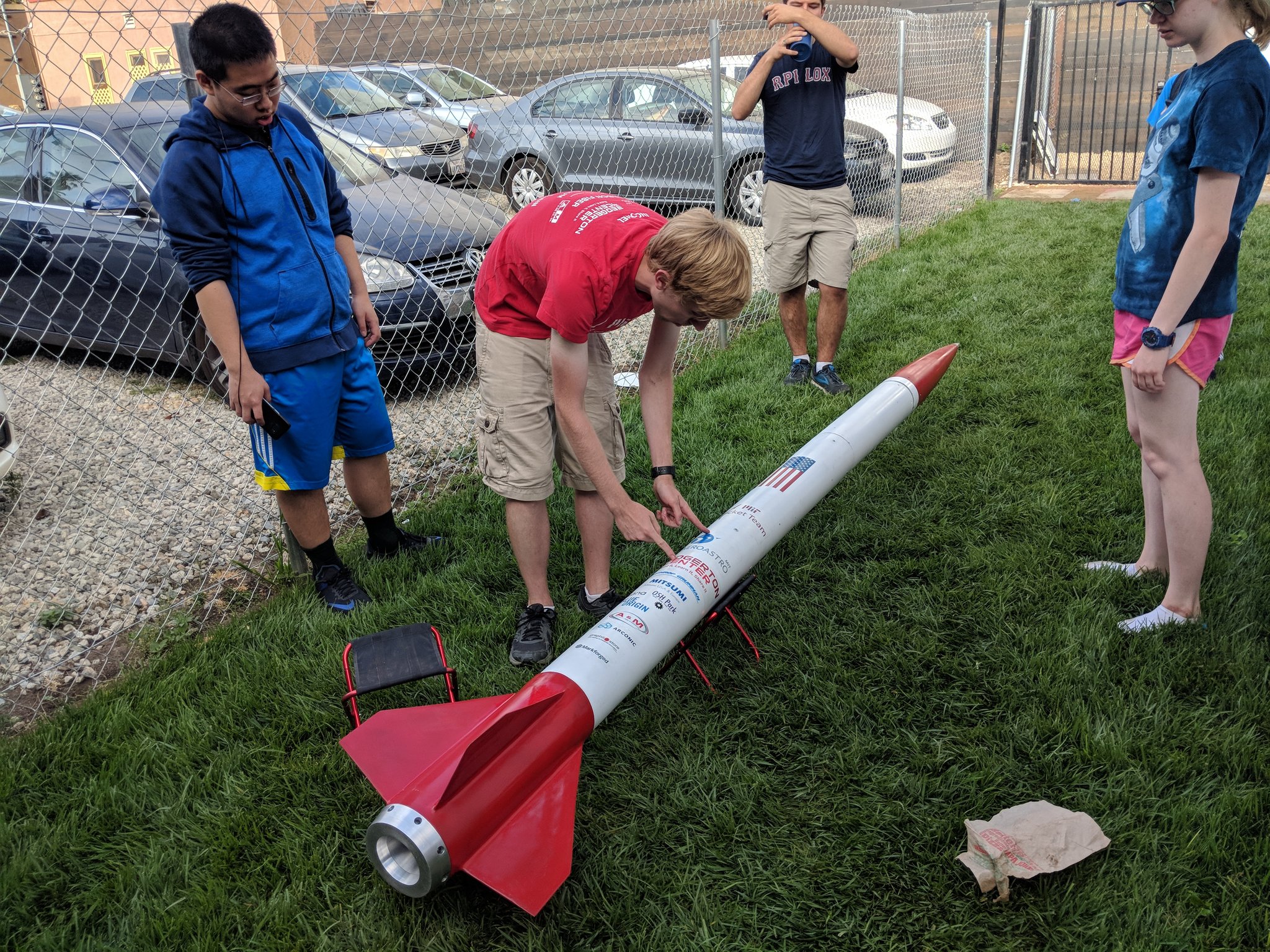Overview
Project Hermes is the team's entry to the 2018 IREC Unlimited Category. It is entirely SRAD. The design was conceived during summer of 2017. It is a single stage, 6in, minimum diameter rocket with a single separation point.current project, intended to prove our ability to build a rocket capable of flight at multiple times the speed of sound to altitudes close to 100kft.
Flight History:
| Flight | Vehicle | Motor | Launch Site | Date | Result |
|---|---|---|---|---|---|
Hermes Flight Test 1 | Raziel Pathfinder | K1085 | Berwick | October 28, 2017 | Pending |
| (mission patch design here) | |
| June 2017 - Present | |
| Leveraging existing technology for extreme performance | |
| Liftoff Mass: ~175 lbs | |
| Propellant Mass: ~85 lbs | |
| Maximum Velocity: ~Mach 3.5 | |
| Maximum Apogee: ~ 80,000ft | |
| Maximum Acceleration: |
| Table of Contents |
|---|
| Hermes 1 | OW-152-4G #3 | Friends of Amateur Rocketry | July 21, 2018 | Success | |
| Hermes Flight 2 | Hermes 2 | P9100 #2 | Friends of Amateur Rocketry | July 6, 2019 | Anomaly |
| Hermes Flight 3 | Hermes 3 | P9100 #3 | Friends of Amateur Rocketry | January 18, 2019 | Anomaly |
(March 2019 CAD)
Vehicles
Hermes 1Hermes I is the first build of a flight-ready Hermes rocket. The structures team delivered an all-composite minimum diameter fin can. Andrew A. constructed a hexagon Avionics Tower, which wrapped around the recovery team's high-altitude-ready piston deployment system. The propulsion subteam prepared and proved a 4 grain 152mm diameter motor for the flight. The rocket was designed to work with an 70KNs motor but was modified to accommodate the 35KNs motor it flew on by putting a motor retention bulkhead into the middle of the air frame. This rocket flew Hermes Flight 1 before being retired to the Rocket Garden in the Unified Lounge. Responsible Engineers Listed Here. Mass Budget here. This rocket was originally envisaged as flying in the 'Unlimited Category' at IREC 2018. Deliverables below:
| |
Hermes 2Hermes II is an iterative improvement on the Hermes I design, intended to eventually serve as a first stage for a spaceshot. The airframe has seen significant upgrades since the Hermes flight, including a simplified avionics bay design, ablative leading edges on the fins, and a shift to a sub-minimum diameter design. More of the rocket structure will be built by the team compared to Hermes I, including the nosecone. The rocket flew on a 74 KNs motor. The rocket shredded during Hermes Flight 2
| |
Hermes 3Hermes III is an iterative improvement on Hermes II, intending to complete the Hermes II flight profile on a reduced timescale. The mission package design was mostly the same as for Hermes II. Some hardware was removed, including the load cell from the forward closure of the motor. The payload bulkhead was significantly redesigned, and process improvements for structural parts were introduced. Hermes III used an aluminum fin can, and flew on the same design of motor from Hermes II. The rocket shredded during Hermes Flight 3. Most of the hardware was recovered. |
Vehicles
Raziel PathfinderRaziel Pathfinder was an unflown Test Article from 2016-2017's Project Raziel. After undergoing extensive modifications, the pathfinder was uprated to flight hardware. The construction of this vehicle is primarily E-glass. Early manufacturing limitations limit the maximum length of any tube produced using the old methods to 24in, so the fin can is held together with a coupler. Some of the tubes are distinctly out of round due to a low-quality mandrel used for initial production runs. The nosecone is a modified COTS gelcoat covered 4:1 Ogieve nose cone. |




